Abstract
1 The effect of imipramine in concentrations between 0.01 microM and 50 microM has been studied on bovine Purkinje fibres and ventricular muscle transmembrane potentials. 2 In electrically stimulated fibres, imipramine had no effect on the resting membrane potential, but decreased the action potential amplitude, overshoot and maximum rate of depolarization (Vmax). 3 In Purkinje fibres, imipramine also decreased the conduction velocity and shifted the membrane responsiveness and recovery time curves downward and to the right. 4 In both Purkinje fibres and ventricular muscle, imipramine decreased the amplitude of phase 2 and prolonged phase 3. In Purkinje fibres, imipramine did not alter the action potential duration (APD) but prolonged the effective refractory period (ERP). In ventricular muscle, at concentrations higher than 1 microM imipramine shortened both the APD and the ERP and made the ERP long as compared to APD. 5 Imipramine decreased the slope of phase 4 diastolic depolarization in spontaneously beating Purkinje fibres. 6 These properties of imipramine are quite similar to those of quinidine or procainamide (class 1 antiarrhythmics). The mechanisms responsible for the cardiac effect of imipramine are discussed.
Full text
PDF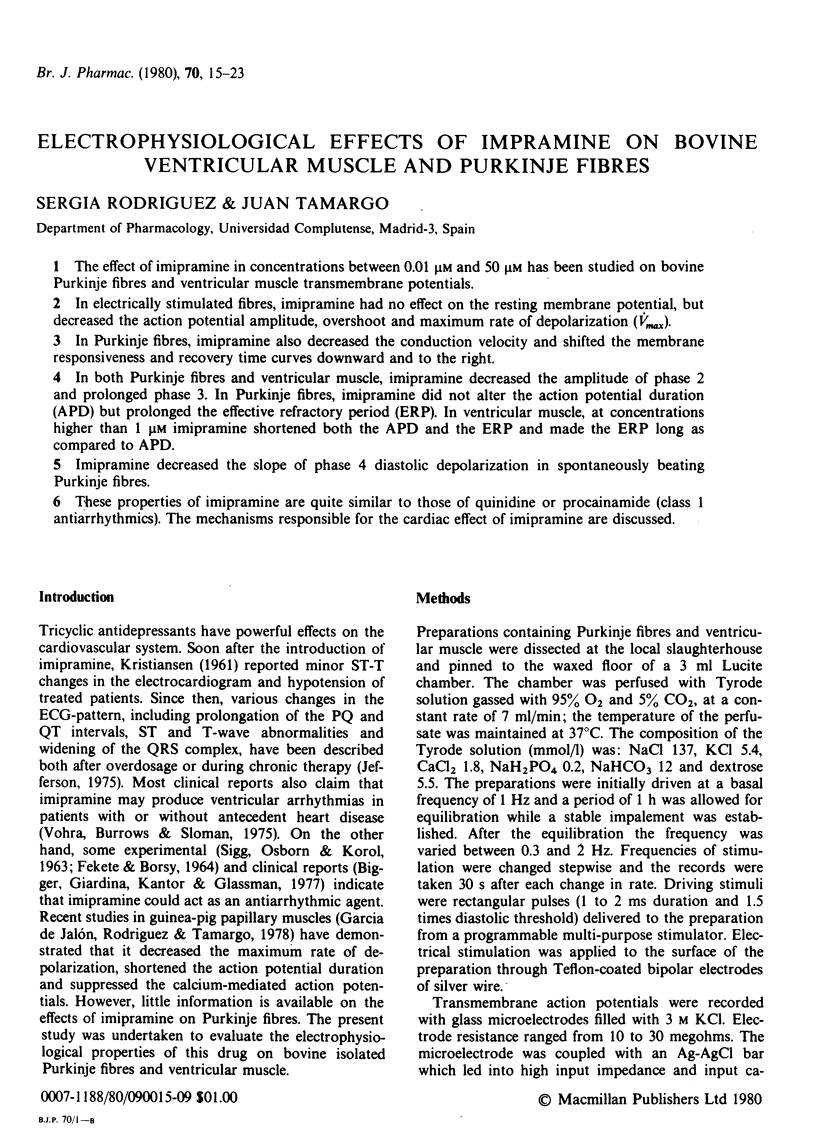
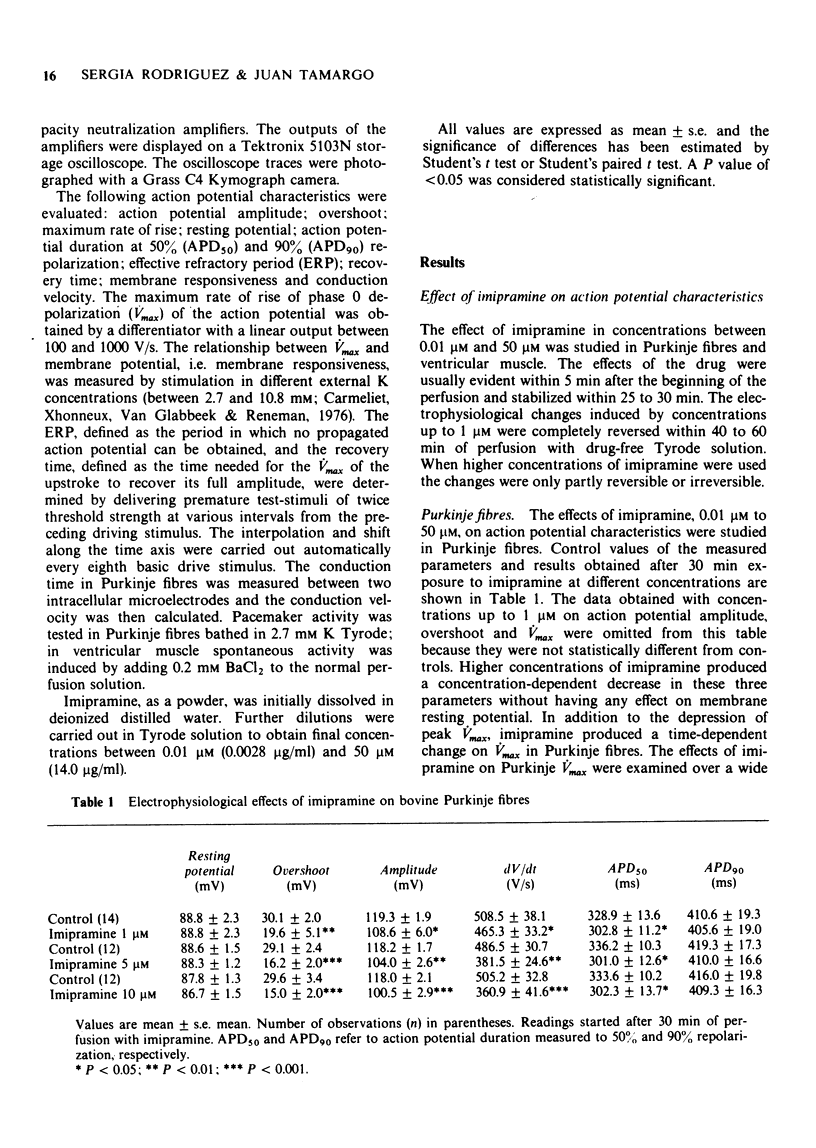
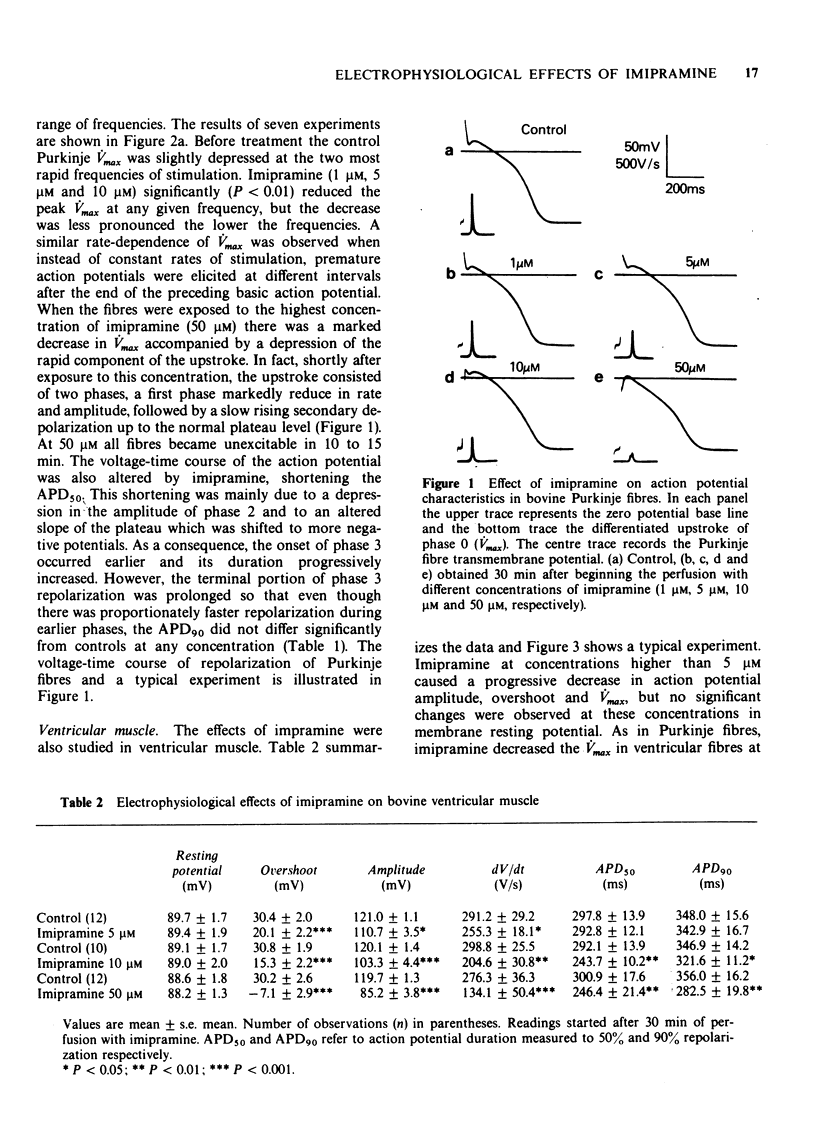
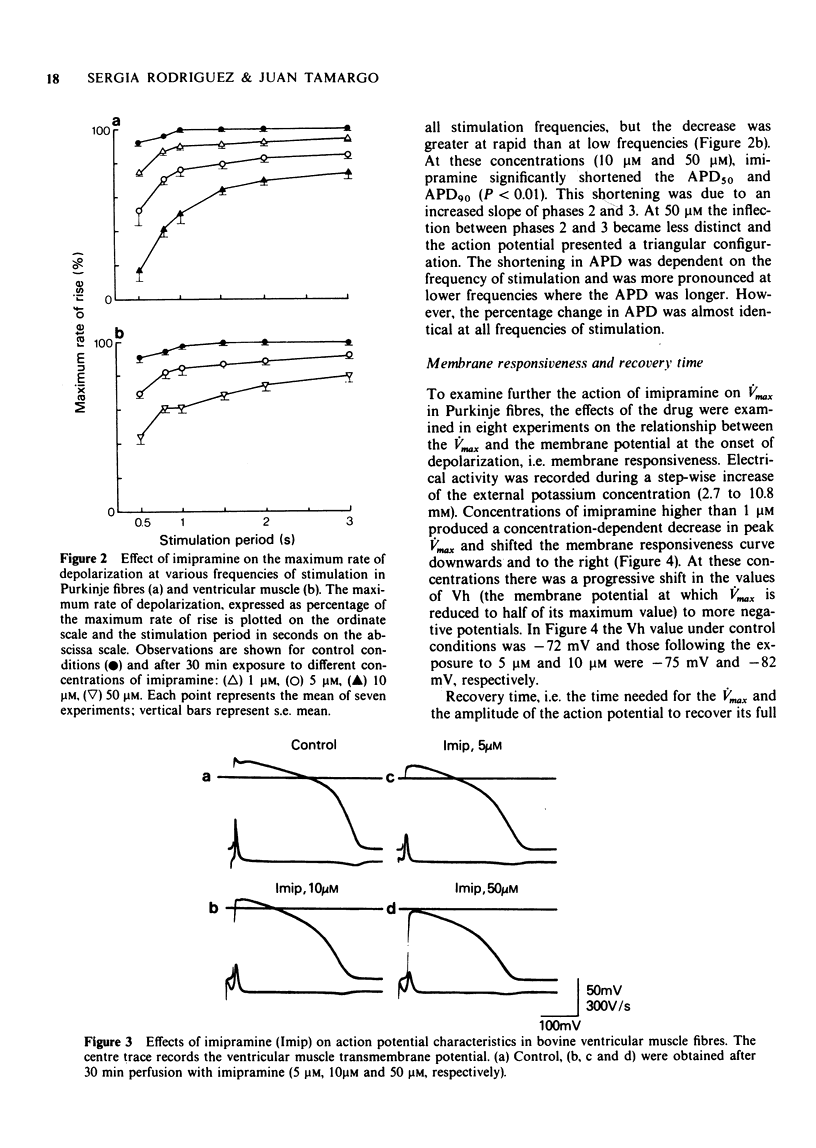
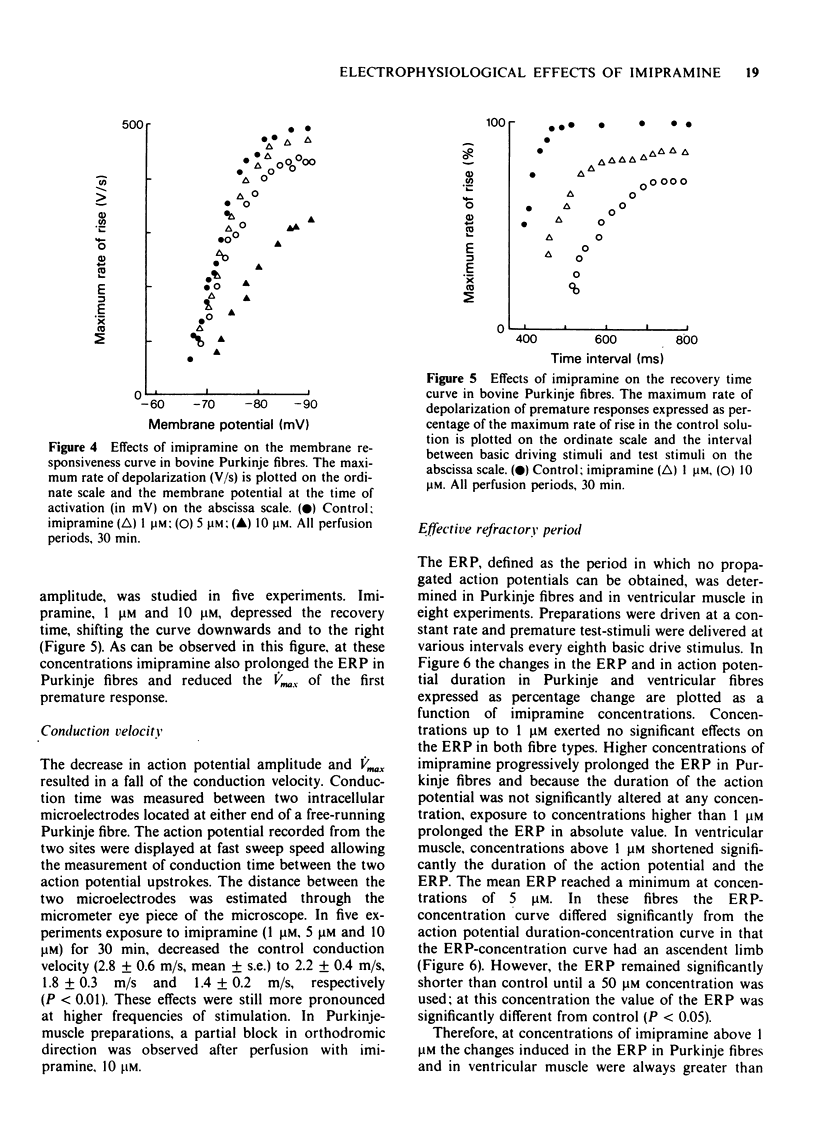
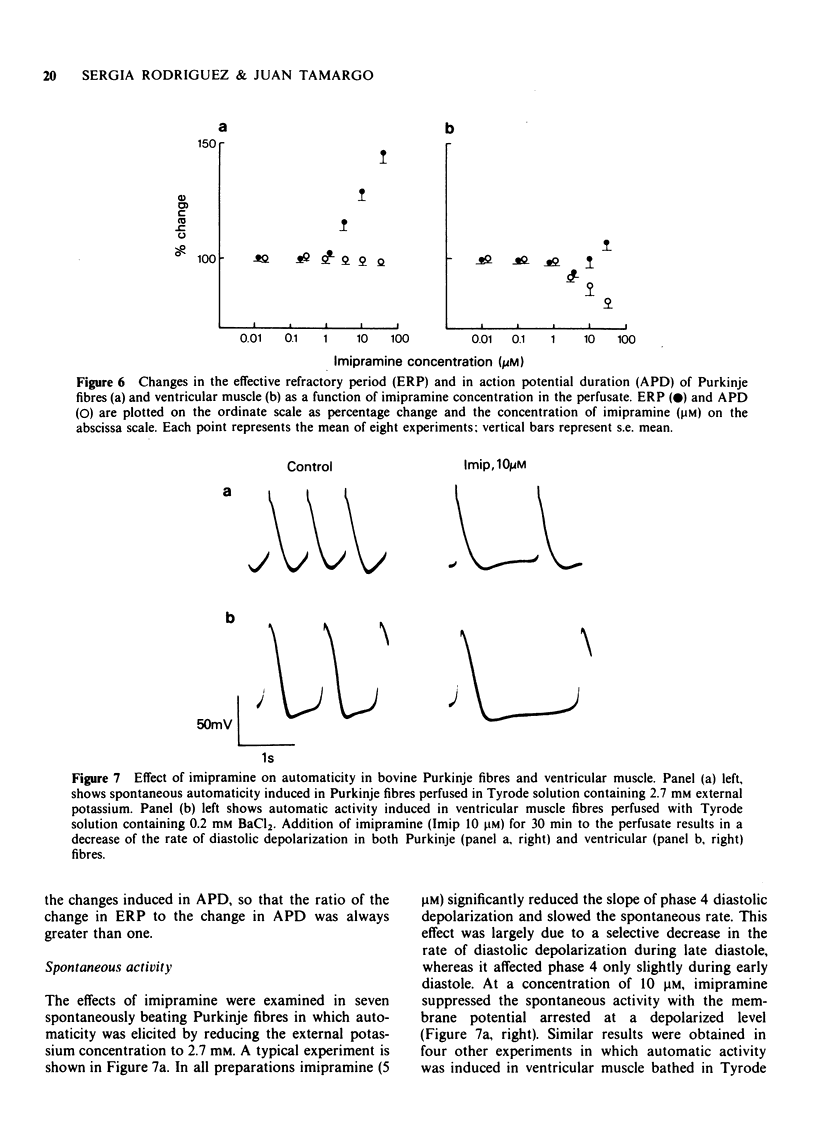
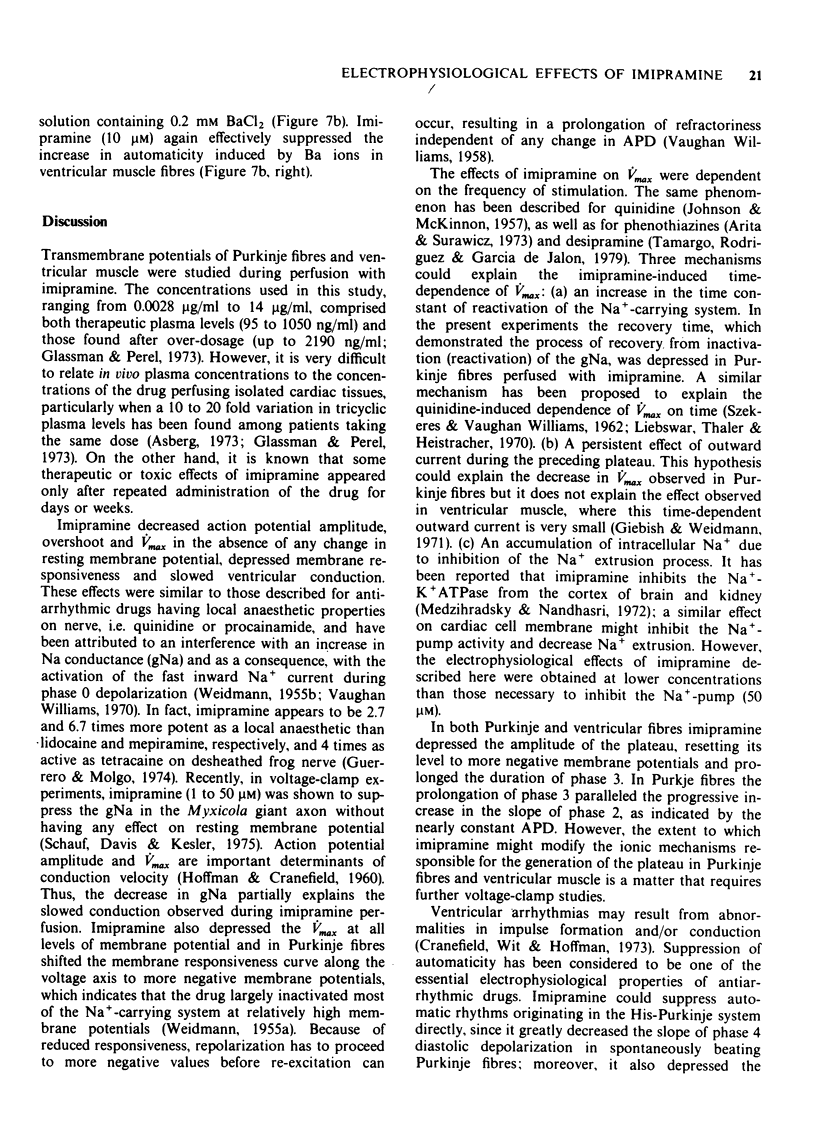
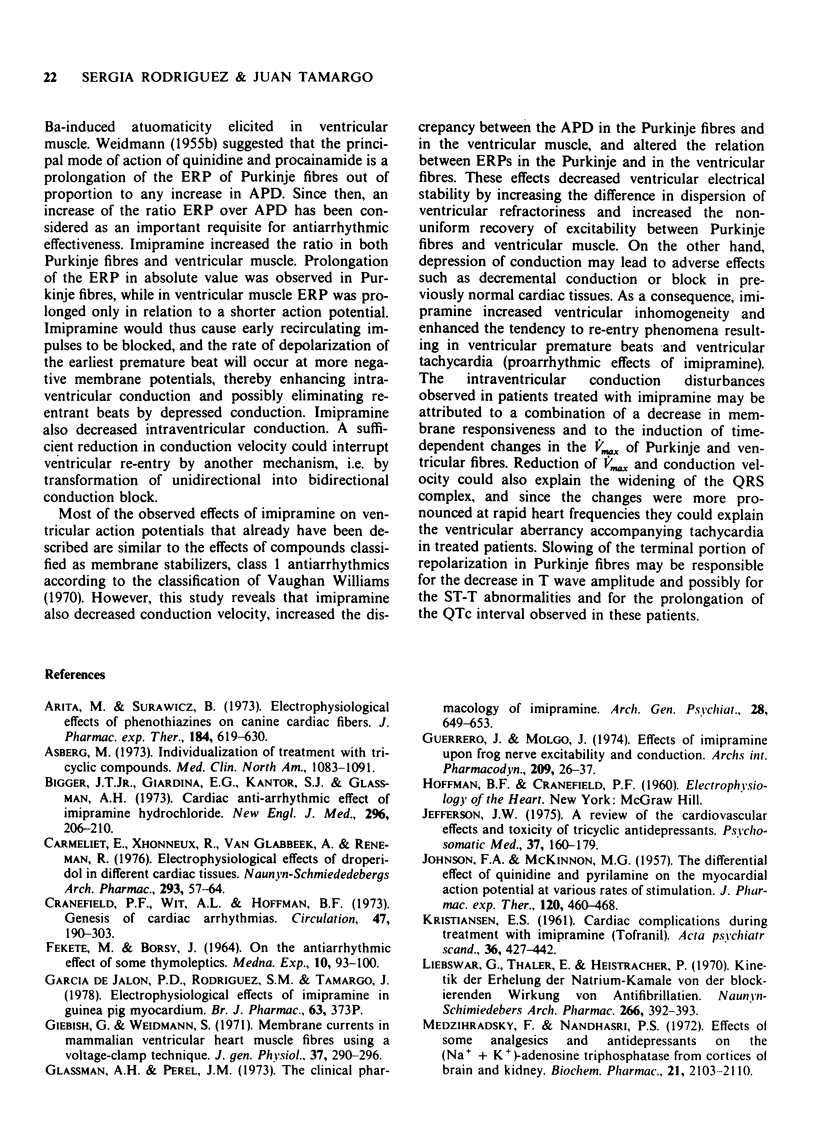
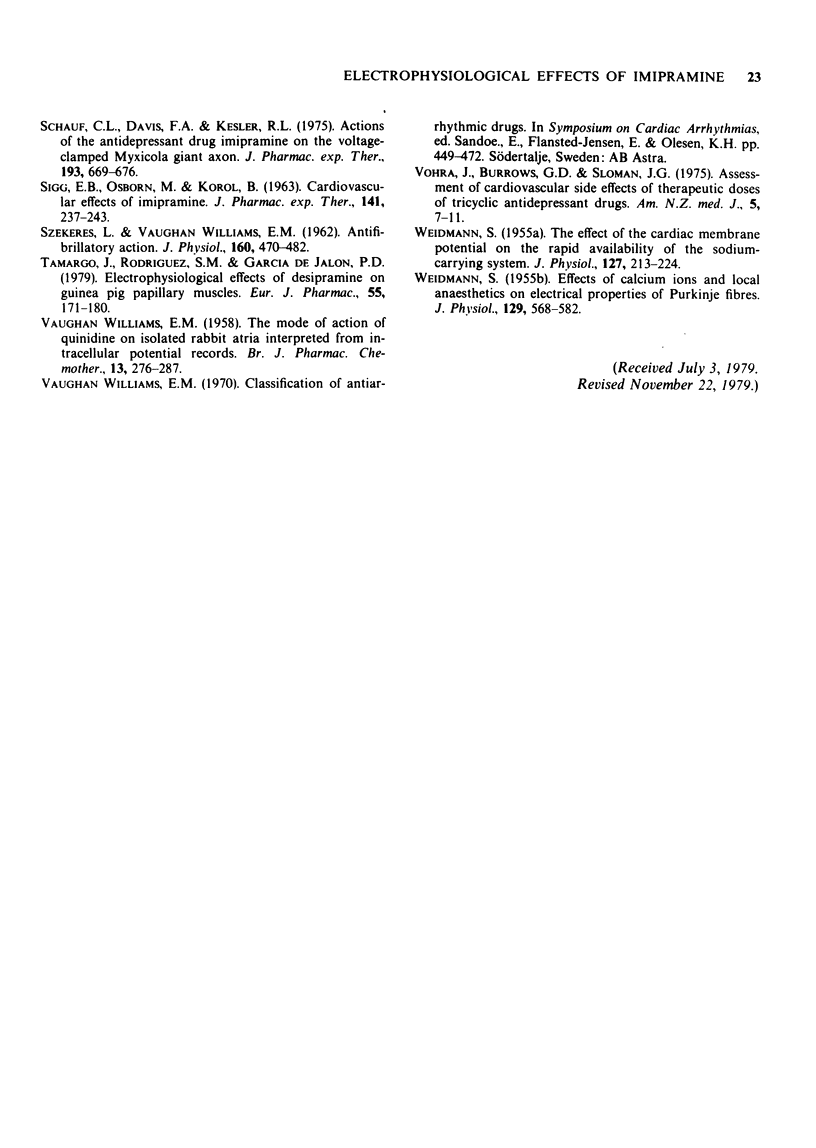
Selected References
These references are in PubMed. This may not be the complete list of references from this article.
- Arita M., Surawicz B. Electrophysiologic effects of phenothiazines on canine cardiac fibers. J Pharmacol Exp Ther. 1973 Mar;184(3):619–630. [PubMed] [Google Scholar]
- Cranefield P. F., Wit A. L., Hoffman B. F. Genesis of cardiac arrhythmias. Circulation. 1973 Jan;47(1):190–204. doi: 10.1161/01.cir.47.1.190. [DOI] [PubMed] [Google Scholar]
- De Jalon P. G., Rodriguez S. M., Tamargo J. Electrophysiological effects of imipramine in guinea pig-myocardium [proceedings]. Br J Pharmacol. 1978 Jun;63(2):373P–373P. [PMC free article] [PubMed] [Google Scholar]
- FEKETE M., BORSY J. ON THE ANTIARRHYTHMIC EFFECT OF SOME THYMOLEPTICS (AMITRIPTYLINE, IMIPRAMINE, TRIMEPROPIMINE AND DESMETHYLIMIPRAMINE). Med Exp Int J Exp Med. 1964;10:93–102. doi: 10.1159/000135401. [DOI] [PubMed] [Google Scholar]
- Giebisch G., Weidmann S. Membrane currents in mammalian ventricular heart muscle fibers using a voltage-clamp technique. J Gen Physiol. 1971 Mar;57(3):290–296. doi: 10.1085/jgp.57.3.290. [DOI] [PMC free article] [PubMed] [Google Scholar]
- Glassman A. H., Perel J. M. The clinical pharmacology of imipramine. Implications for therapeutics. Arch Gen Psychiatry. 1973 May;28(5):649–653. doi: 10.1001/archpsyc.1973.01750350029006. [DOI] [PubMed] [Google Scholar]
- Guerrero S., Molgó J. Effects of imipramine upon frog nerve excitability and conduction. Arch Int Pharmacodyn Ther. 1974 May;209(1):26–37. [PubMed] [Google Scholar]
- JOHNSON E. A., McKINNON M. G. The differential effect of quinidine and pyrilamine on the myocardial action potential at various rates of stimulation. J Pharmacol Exp Ther. 1957 Aug;120(4):460–468. [PubMed] [Google Scholar]
- Jefferson J. W. A review of the cardiovascular effects and toxicity of tricyclic antidepressants. Psychosom Med. 1975 Mar-Apr;37(2):160–179. doi: 10.1097/00006842-197503000-00006. [DOI] [PubMed] [Google Scholar]
- KRISTIANSEN E. S. Cardiac complications during treatment with imipramin (Tofranil). Acta Psychiatr Scand. 1961;36:427–442. doi: 10.1111/j.1600-0447.1961.tb01057.x. [DOI] [PubMed] [Google Scholar]
- Liebeswar G., Thaler E., Heistracher P. Kinetik der Erholung der Natrium-Kanäle von der blockierenden Wirkung von Antifibrillantien. Naunyn Schmiedebergs Arch Pharmakol. 1970;266(4):392–393. [PubMed] [Google Scholar]
- Medzihradsky F., Nandhasri P. S. Effects of some analgesics and antidepressants on the (Na + + K + )-adenosine triphosphatase from cortices of brain and kidney. Biochem Pharmacol. 1972 Aug 1;21(15):2103–2109. doi: 10.1016/0006-2952(72)90163-3. [DOI] [PubMed] [Google Scholar]
- SIGG E. B., OSBORNE M., KOROL B. CARDIOVASCULAR EFFECTS OF IMIPRAMINE. J Pharmacol Exp Ther. 1963 Aug;141:237–243. [PubMed] [Google Scholar]
- Schauf C. L., Davis F. A., Kesler R. L. Actions of the antidepressant drug imipramine on the voltage-clamped Myxicola giant axon. J Pharmacol Exp Ther. 1975 May;193(2):669–675. [PubMed] [Google Scholar]
- Szekeres L., Williams E. M. Antifibrillatory action. J Physiol. 1962 Mar;160(3):470–482. doi: 10.1113/jphysiol.1962.sp006860. [DOI] [PMC free article] [PubMed] [Google Scholar]
- Tamargo J., Rodriguez S., Garcia de Jaloń P. Electrophysiological effects of desipramine on guinea pig papillary muscles. Eur J Pharmacol. 1979 Apr 15;55(2):171–179. doi: 10.1016/0014-2999(79)90389-3. [DOI] [PubMed] [Google Scholar]
- VAUGHAN WILLIAMS E. M. The mode of action of quinidine on isolated rabbit atria interpreted from intracellular potential records. Br J Pharmacol Chemother. 1958 Sep;13(3):276–287. doi: 10.1111/j.1476-5381.1958.tb00903.x. [DOI] [PMC free article] [PubMed] [Google Scholar]
- Vohra J., Burrows G. D., Sloman G. Assessment of cardiovascular side effects of therapeutic doses of tricyclic anti-depressant drugs. Aust N Z J Med. 1975 Feb;5(1):7–11. doi: 10.1111/j.1445-5994.1975.tb03247.x. [DOI] [PubMed] [Google Scholar]
- WEIDMANN S. Effects of calcium ions and local anesthetics on electrical properties of Purkinje fibres. J Physiol. 1955 Sep 28;129(3):568–582. doi: 10.1113/jphysiol.1955.sp005379. [DOI] [PMC free article] [PubMed] [Google Scholar]
- WEIDMANN S. The effect of the cardiac membrane potential on the rapid availability of the sodium-carrying system. J Physiol. 1955 Jan 28;127(1):213–224. doi: 10.1113/jphysiol.1955.sp005250. [DOI] [PMC free article] [PubMed] [Google Scholar]


